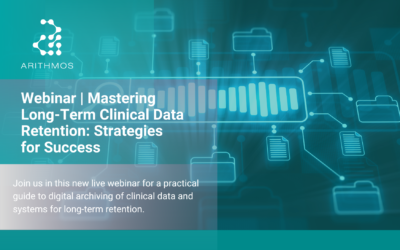Choosing the Right Safety Database: Challenges & Decision-making Factors
Life Sciences businesses are caught in a whirligig. Pharma, medical devices, biotech companies, and CROs – they all are being forced up a steep learning curve for embracing the rapidly evolving landscape. This challenge involves every single department, including pharmacovigilance.
As regulatory demands continue to grow, pharmacovigilance business units need to have the resources and the technological framework in place to integrate compliance practices into everyday workflow.
Safety database plays a key role in shaping the technological framework. The right database allows you to manage adverse event cases more accurately and more efficiently whilst ensuring regulatory compliance and satisfying the growing needs of your company.
In this article, we will focus on analysing the challenges of a pharmacovigilance department, and decision-making factors that influence the choice of the key pharmacovigilance tool to overcome these challenges – the safety database.
Pharmacovigilance Department Challenges
The right safety database offers solutions to multiple challenges that a pharmacovigilance team faces – from the increasing complexity of the regulatory landscape to the integration of RWE. Here are the main challenges that the vigilance team looks to resolve with an acquisition of a database:
Growing of AE volume
Companies face a rapid growth of AE information for multiple reasons:
- Introduction of additional sources of Adverse Events
- Use of new drugs, repurposed drugs and development of the new vaccines in COVID-19 pandemic context
Complexity of Global Regulations
Increased regulatory requirements continue driving the need for new vigilance capabilities not only in the pharmaceutical environment but also in other areas like medical devices.
Increasing Complexity of Product Portfolios and New Markets
Product portfolios are increasing in complexity on a global market. Organisations must be prepared to handle this in countries with newborn regulatory environments and where regulations are already evolving and formalising.
Evolving Data Science and Automation
Data science and automation are evolving for case management and signal detection. Companies are in a constant search of advanced safety data analytics tools that allow maintaining focus on risk/benefit analysis and signal management.
Rising Organisational Pressure to Minimise Costs
The vigilance business is facing an increased top-down organisational pressure to reduce costs while delivering the highest quality of work.
Wearables, Social Media Driving Real-time, RWE Data
New sources of information are pushing Life Sciences companies to build up advanced analytics capabilities which they can use to drive value.
Businesses are also facing increasing pressure to keep up with the regulators, as they are evaluating and implementing processes and standards to explore RWE sources for signals and safety information.
Increased Focus on Patient Centricity
Life Sciences companies are actively seeking to be more patient-centric in drug research and development. Vigilance and surveillance are transformed by regulatory guidance and initiatives which emphasise the importance of the patient’s perspective in drug safety.
To meet these expectations, pharmacovigilance departments need to develop a more patient-centered culture, use a framework-driven approach to patient engagement and become proficient in a range of patient-centered competencies.
Decision-making Factors
In order to successfully overcome these challenges and meet the pharmacovigilance team expectations as well as company strategic objectives, you should consider these key points while choosing the right safety database:
Flexibility and Scalability
Be sure that your system can satisfy both your current needs and future ones. To optimise all processes and resources in the near future, you might need to integrate robotic process/artificial Intelligence. These expanded capabilities will help you in the future to cope with the continuous increase of the case volume.
Complexity Reduction
Pick a configurable solution that you can easily change in order to support evolving business and regulatory requirements.
Prefer solutions provided with a strong support network able to provide to your team technical and business assistance and minimise the involvement of company IT.
Cost Efficiencies
Avoid customisations that could provide adherence to your current requirements but cause unpredictable costs for the future. If this happens, you will lose your customisation or generate data inconsistencies for future upgrades.
Choosing SaaS, cloud, or on-premise solutions, evaluate hidden costs like usage of internal resources for hosting and maintenance as well as the balance between opex and capex.
GxP Regulatory Compliance
Make sure you have resources and a technological framework in place to build compliance practices into everyday workflow. This can also reduce validation effort and relevant costs.
Data Integrity and Privacy Compliance
Be compliant with multiple regulations, not only GPV or GxP in general. Be sure that your service provider or your company has an information security management system that is compliant with international standards and that guarantees security and the availability of the data.





